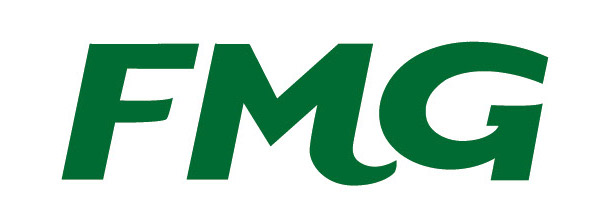Why trees and fires make bad bedfellows SPONSORED
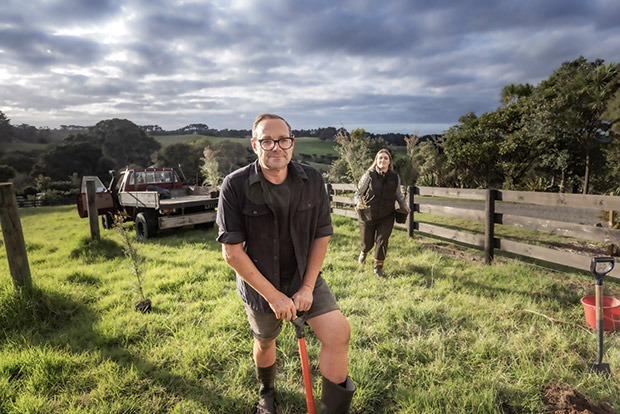
FMG’s Montana Kerr and Michael Van de Elzen planting trees on his Muriwai lifestyle block.
Trees are significant hazards on their own, but pair them with fire and you’ve got a potential disaster. Michael Van de Elzen and FMG’s Montana Kerr share their top tips to mitigate risks.
Words: Michael Andrew Images: James Blackwood
There’s little chef Michael Van de Elzen doesn’t think about when planting new trees on his Muriwai lifestyle block. There’s the shelter and privacy aspect, and how they might affect access ways and services once they’re grown. But there’s another, more subtle factor that he says property owners need to be especially vigilant about: how trees can exacerbate fire risk.
“We’re always conscious of fire risk whenever we’re planting trees,” Michael says. “We also seek advice from partners like FMG on what the best course of action is.”
“FMG’s lifestyle block specialist Montana Kerr says tree location, selection and maintenance are crucial elements that will help mitigate that spread.”
While all types of fires are potential hazards that need to be carefully managed, the danger lies in how fast and far they can spread uncontrolled. FMG’s lifestyle block specialist Montana Kerr says tree location, selection and maintenance are crucial elements that will help mitigate that spread, potentially saving buildings, livestock, property and even lives on rural properties.
TREE LOCATION
An important rule of tree placement is to keep them away from buildings, Montana says. There should be a buffer or safety zone between your home and any large trees, so that any fires on your block may be stifled by the distance. Keeping large trees away from the house means less highly flammable dry foliage will fall onto your roof and into the gutters. It also prevents damage to the building from the trees or falling branches in the event of a bad storm.
On Michael’s block, most trees are planted as windbreaks or to provide some extra privacy from nearby dwellings. “By design these plantings are far away from both the house and our cookery school,” he says. “If we want to plant close to buildings, we ensure we can control the size of the plant or tree.”
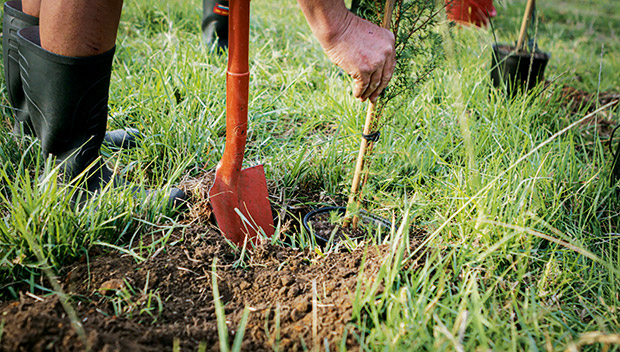
The location of new plantings must be carefully planned to mitigate fire risk.
He keeps big trees at least 20 metres away from the house. He is mindful of the size trees can become and how often they need to be pruned.
Even if trees are spaced away from the house, it’s important they aren’t impeding any access ways to and from the property. Ideally, access ways should have clearance of four metres across and four metres above, with enough space for a fire truck to turn around if it needs to enter the property.
TREE SELECTION
Other than planning where the trees are, it’s crucial to consider what the trees are. Some trees like cypress, douglas fir and eucalyptus can be highly flammable and should be planted away from the home.
On his block, Michael has planted hundreds of New Zealand natives, but he’s careful never to plant these around his house or within the buffer area. Montana says it pays to be aware of how far certain trees can sprawl when planting them, as this could affect nearby service infrastructure, potentially causing a fire.
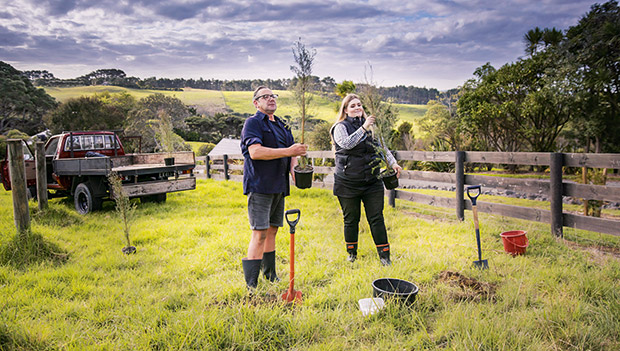
Michael Van de Elzen and Montana Kerr assess each tree before planting them to determine if they’re the right species for this site.
“Different types of trees have different types of root systems,” she says. “If a tree has an extensive root system that ends up growing quite far underground it could hit pipes and cables.”
Likewise, rural property owners should be mindful of overhead power lines and ensure they don’t plant a tree that encroaches within four metres.
TREE MAINTENANCE
For existing tree stock, regular maintenance and pruning is critical to mitigate both fire risk and general hazards. Montana says 15% of FMG’s lifestyle liability claims are from falling branches or trees. Old trees with dead branches are particularly dry and flammable and a dangerous source of fuel for a wildfire.
Property owners should thin small trees regularly and remove any branches that are less than two metres off the ground on large trees.
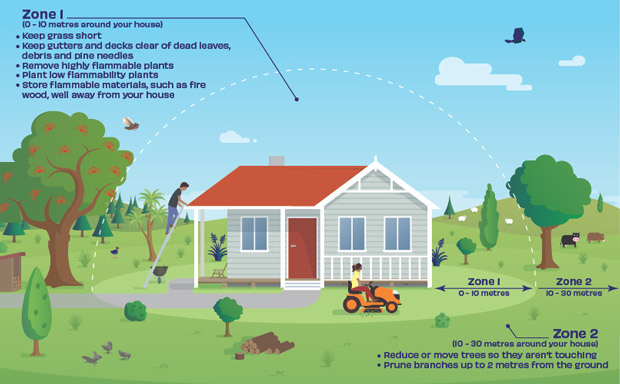
It’s important for property owners to establish a safety zone around their house and for any trees beyond the safety zone to be spaced out and pruned regularly. Source: fireandemergency.co.nz
“Our aim is always to keep the trees well maintained to prevent them becoming fire risks,” says Michael. “We get a local company every two years to keep the larger trees in check. This cost should be factored into any annual farm costs.”
Michael had a close call during the first 2020 lockdown when a branch fell onto the power lines on his block and caught fire. “We called 111 and they sent out a local fire engine. In the end, we had to get lines company Vector out to remove the branch.”
Montana says it’s important for property owners to take responsibility for trees encroaching on power lines and have these pruned by approved contractors. “There is liability cover through FMG for these types of risks as well,” she says.
OTHER FIRE RISKS
Stacking firewood up against a house is a mistake lifestyle block owners sometimes make. Montana says this is a major hazard as it can allow a fire to spread from nearby trees to your home. Firewood should be stored beyond the buffer zone – at least ten metres from the house.
Michael has heeded this advice and stores his firewood away from the house in an outdoor sitting area. Perhaps most importantly, fuel for farm machinery is stored separately in a lockable shed.
Aside from tree care, there are a range of other regular practices that Montana says can prevent a fire from starting in the first place. Regular chimney and fireplace maintenance is top of the list. Around 20% of all FMG’s house fire claims come from chimneys or fireplaces, Montana says. Block owners should therefore have chimneys swept and cleared before winter, and a fireguard should be used in front of fireplaces to block hot embers and sparks.
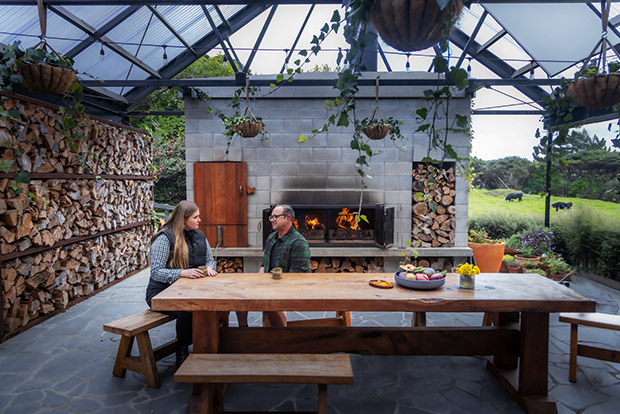
Michael and Montana discuss fire safety in the covered outdoor sitting area on his lifestyle block.
This is a priority on Michael’s block: “As we have five fireplaces on the property – the majority of them are used for cooking – we regularly maintain the chimneys and are strict about maintenance to minimise any risks,” he says.
The other practices include using power surge protectors, smoke alarms, fire extinguishers, and of course, having an emergency plan.
“This should be an absolute priority,” says Michael. “We have the Good From Scratch Cookery School on site so we have a clear emergency plan. As part of housekeeping at the start of classes we let people know where the assembly point is in the case of a fire.
“We have also spoken to our daughters about what to do in the event of a fire, and they know exactly where to go and what to do.”
As New Zealand’s leading rural insurer with over 116 years of experience, FMG can provide you with specialist advice and award-winning insurance for your lifestyle block.
Phone: 0800 366 466
Facebook: @FarmersMutualGroup
Instagram: @FMG_nz
Website: www.fmg.co.nz

Love this story? Subscribe now!
 This article first appeared in NZ Lifestyle Block Magazine.
This article first appeared in NZ Lifestyle Block Magazine.
